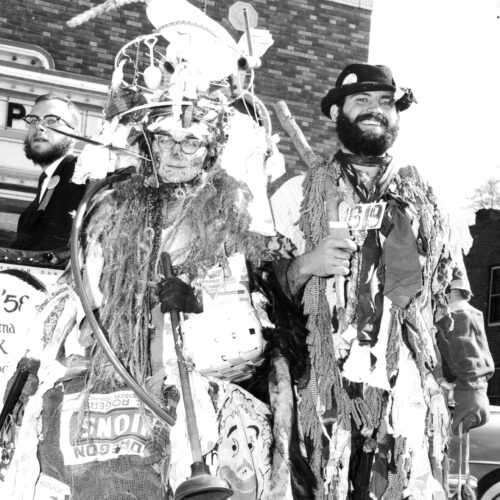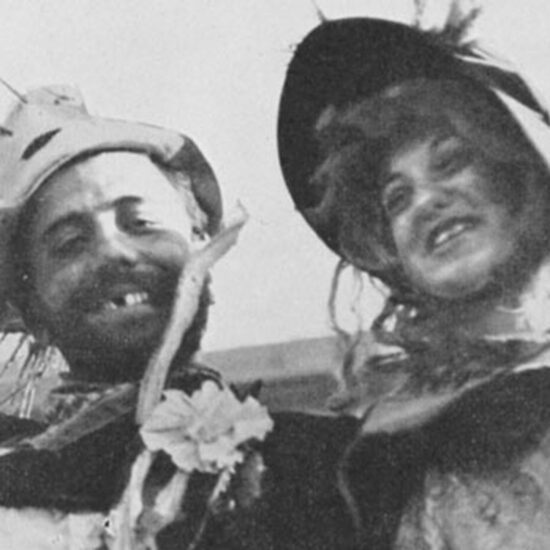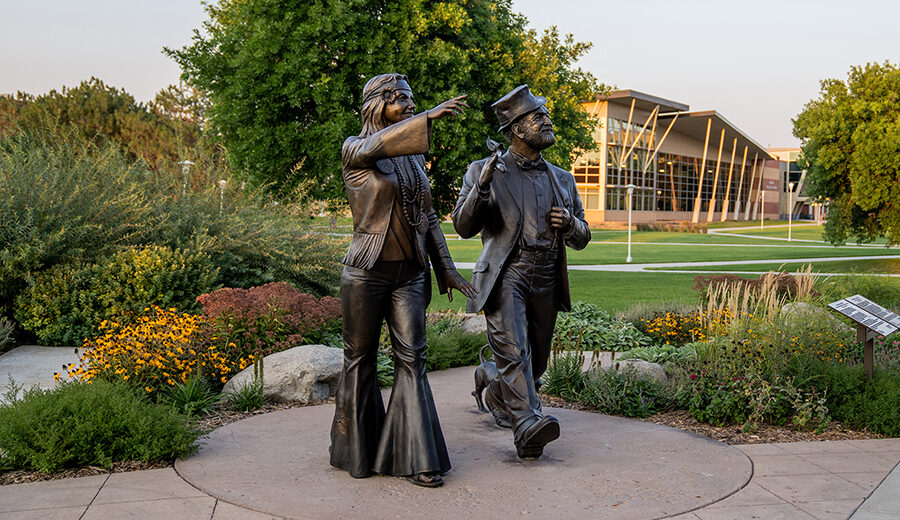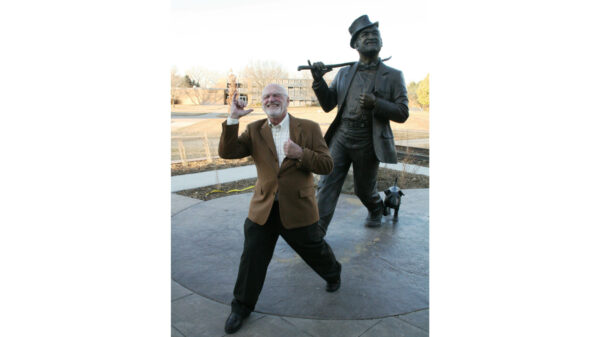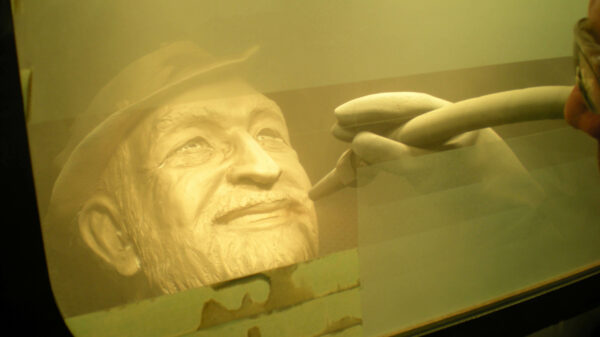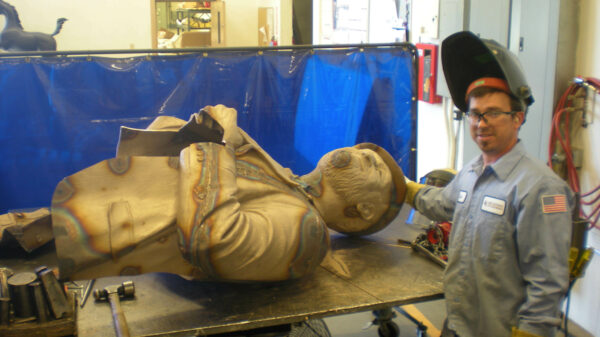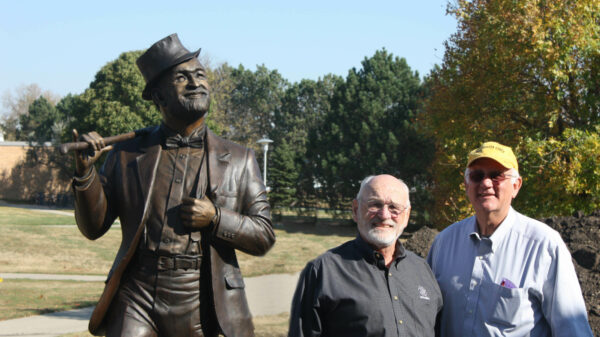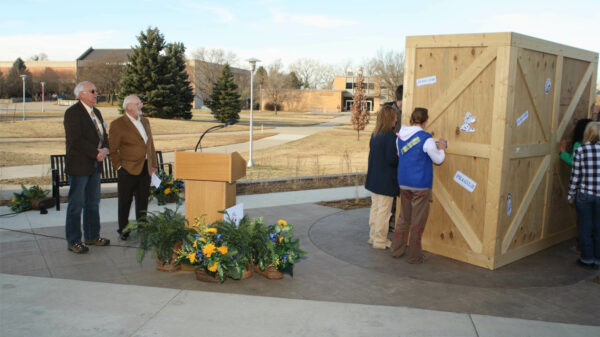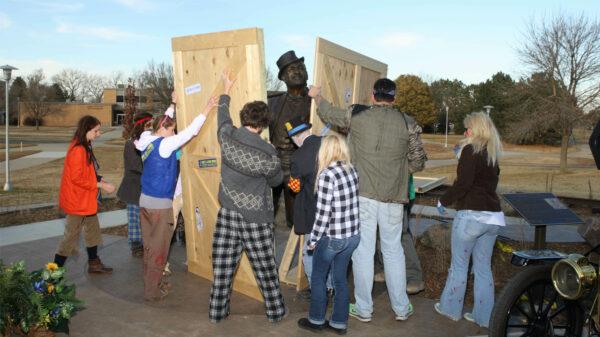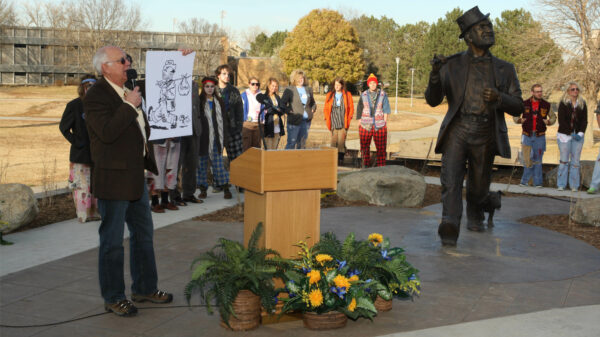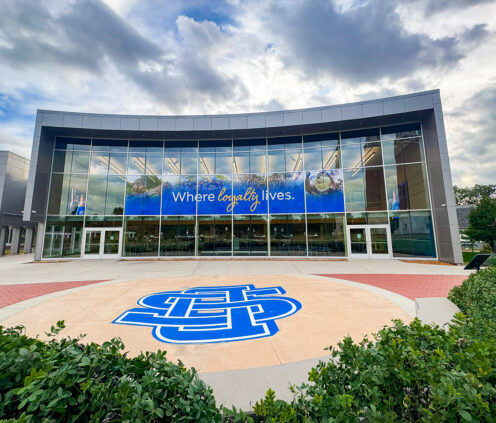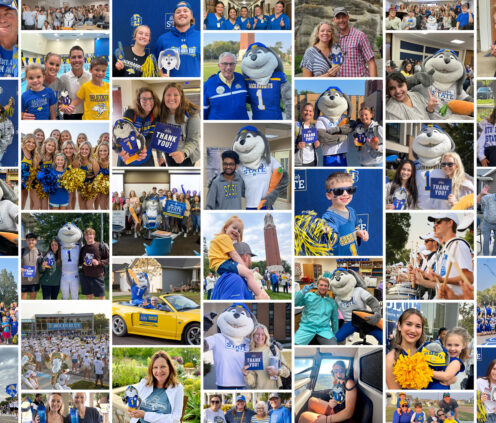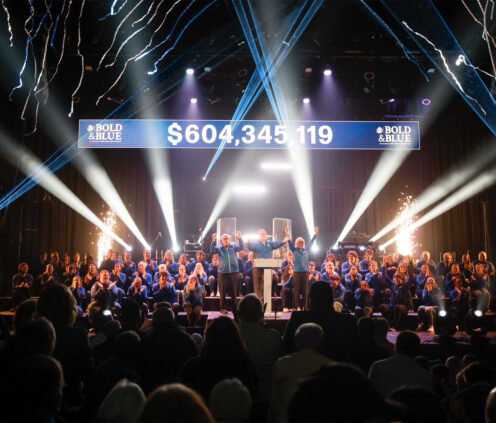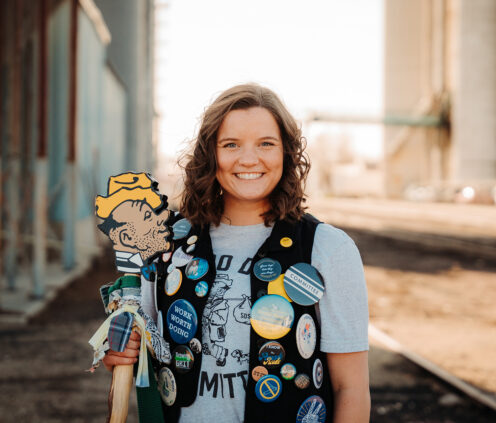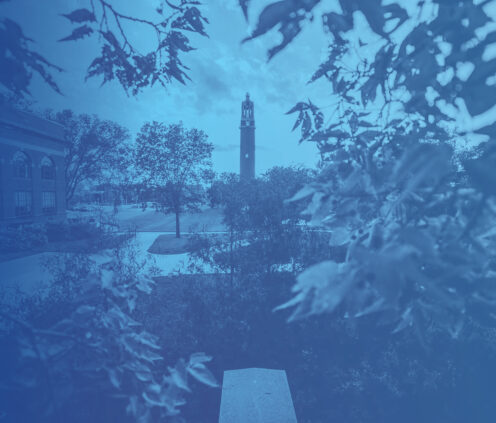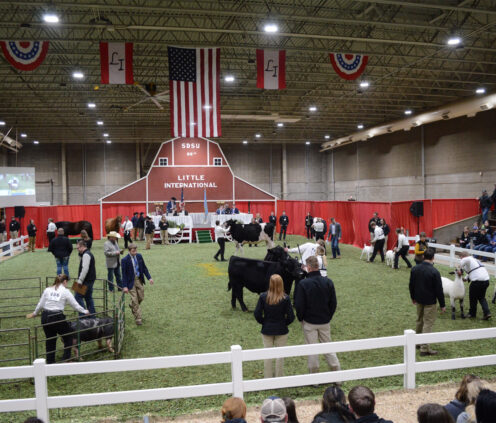The Statues
Much like the inspiration for the dynamic duo, the statue of Wil came first. Sculpted by alumnus David Anderson, the Weary Wil statue was modeled after fellow alum, David Blegen.
When the university decided to construct the Hobo Day Gallery, the two Davids dreamed up the idea to create a lasting tribute to SDSU’s favorite dynamic duo.
Anderson created the Wil sculpture first, unveiled in 2011. Nearly two years later, on the eve of Hobo Day, Dirty Lil was added next to Wil on October 4, 2013.
Though the statues depict the characters celebrated for over half a century at SDSU, they also are based on real Jackrabbits from the university. Anderson modeled Weary Wil after his cohort, Blegen, a 1963 Hobo Day Chairman and Distinguished Alumnus who was instrumental in catalyzing the statue project. Fortunately, with his beaming smile and signature beard, Blegen bears a more-than-passing resemblance to Wil.


